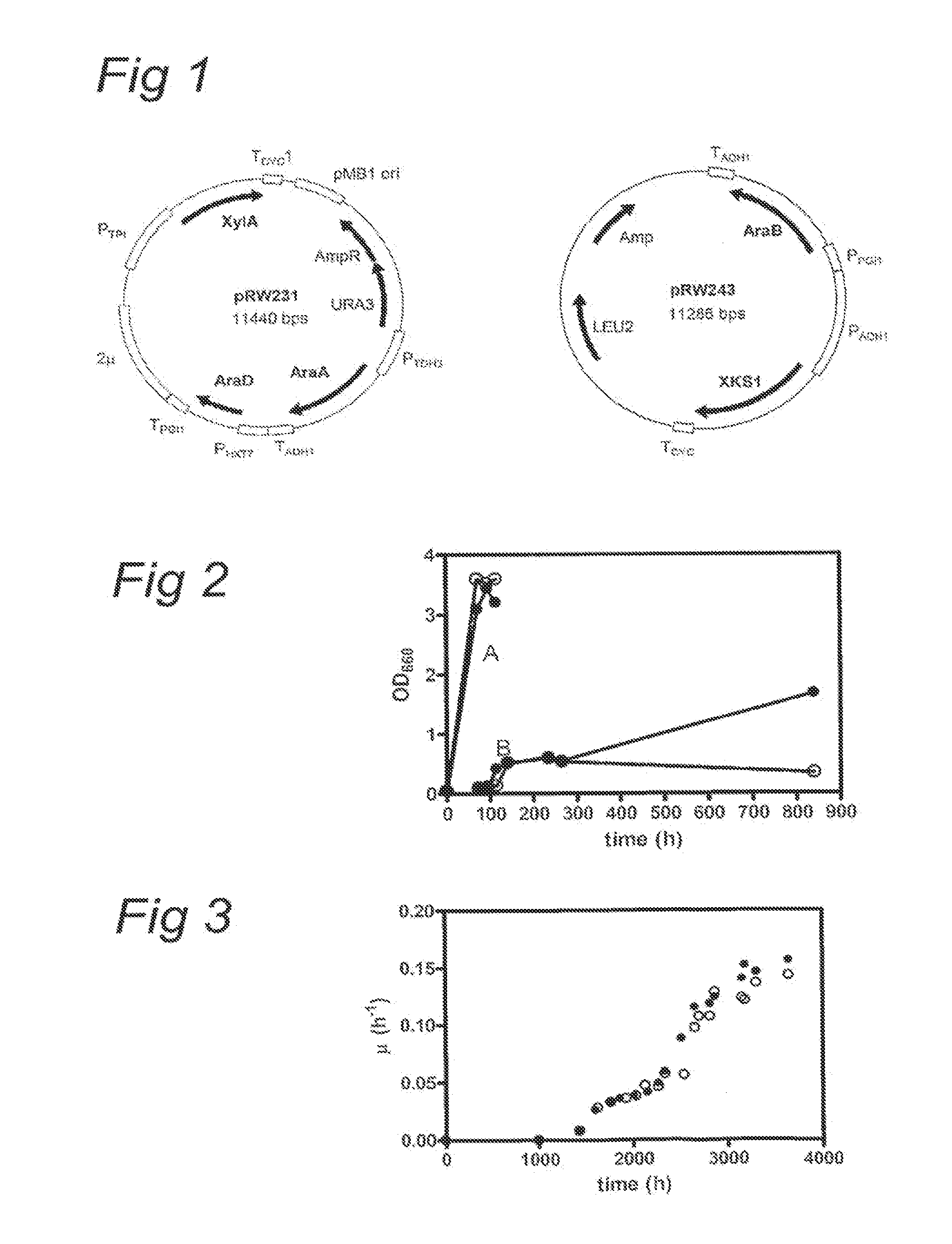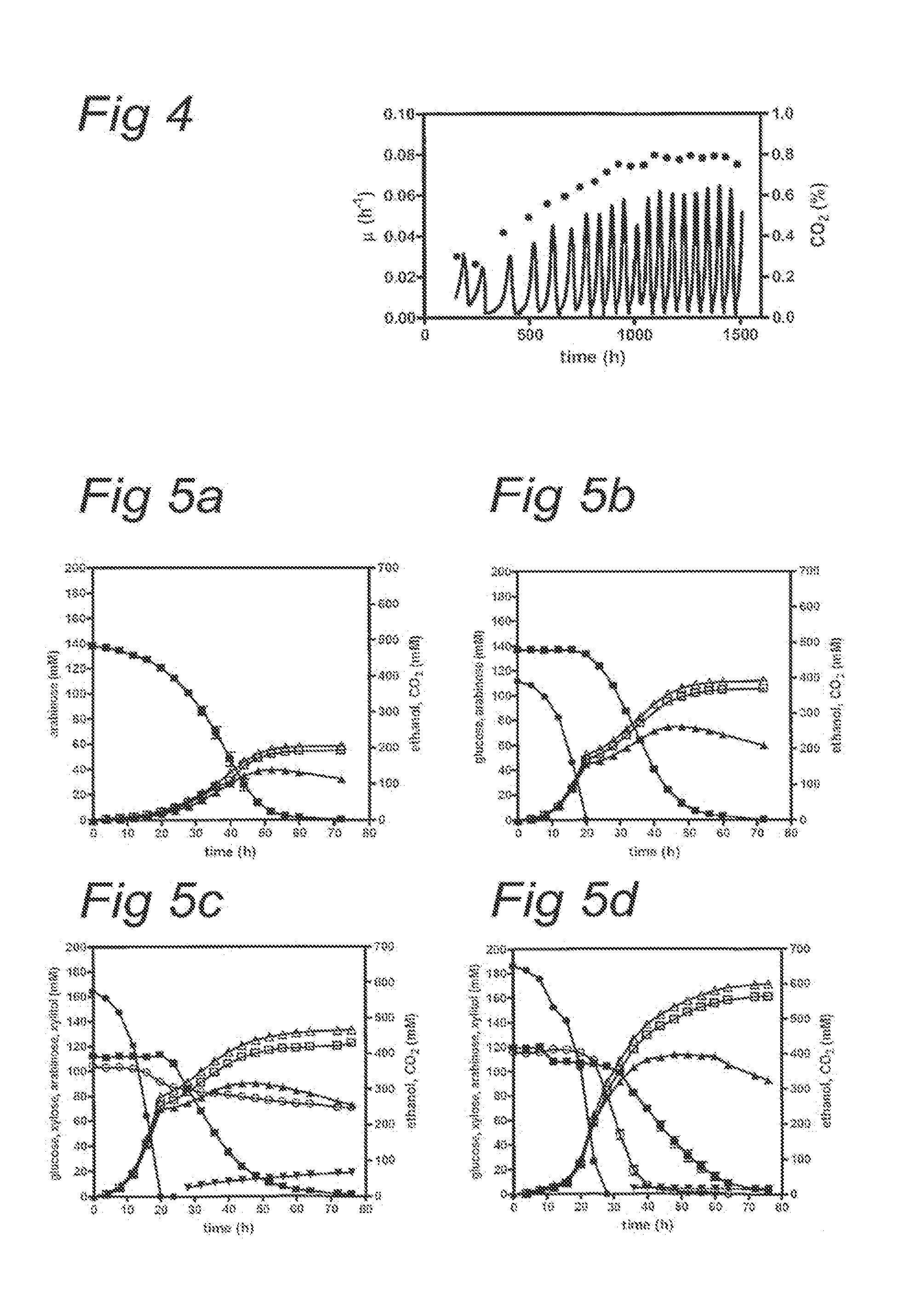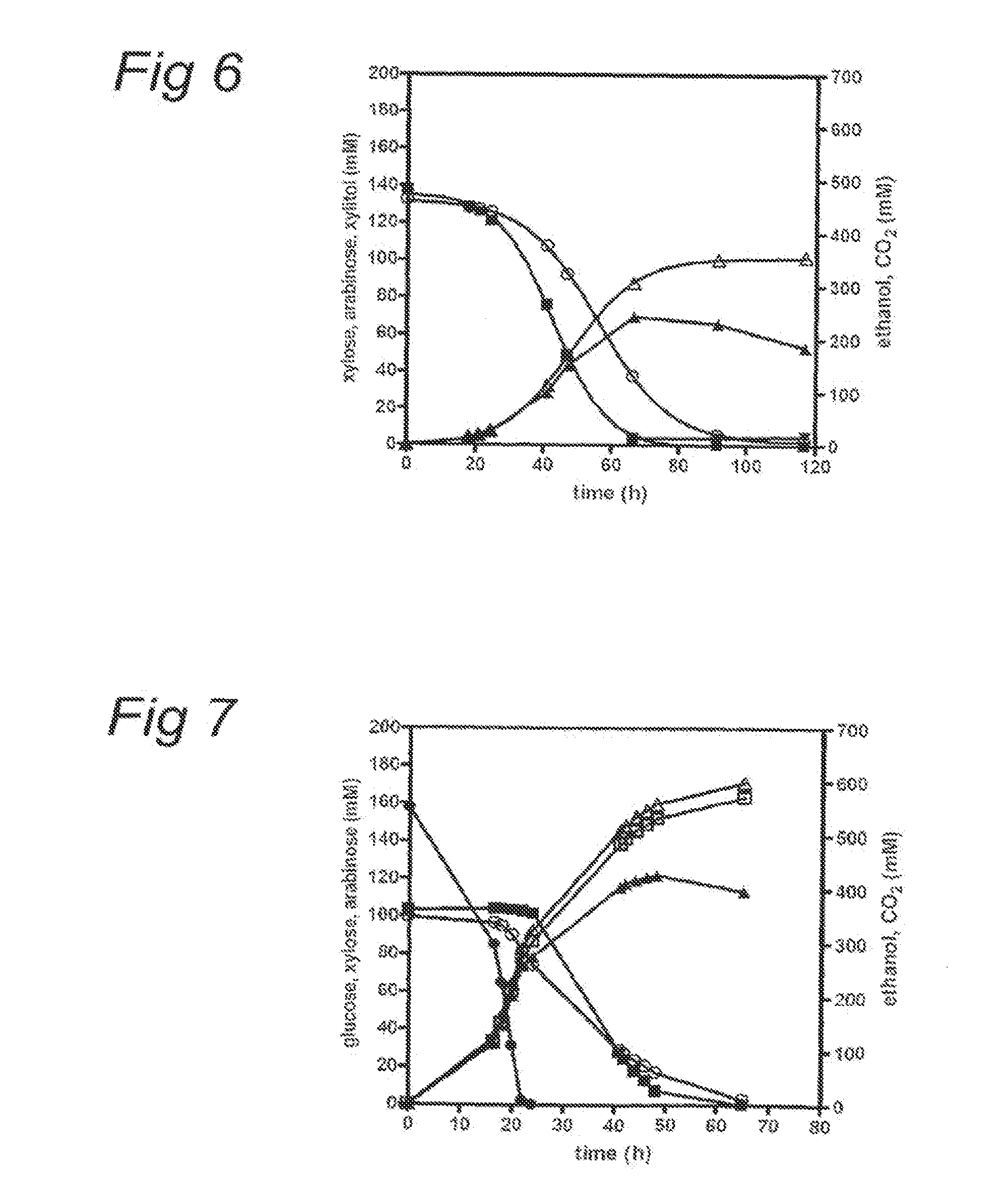Metabolic engineering of arabinose-fermenting yeast cells
a technology of arabinose and yeast cells, applied in the field of eukaryotic cells, can solve the problems of not being able to use l-arabinose under anaerobic conditions, and not being able to co-ferment several c5 sugars
- Summary
- Abstract
- Description
- Claims
- Application Information
AI Technical Summary
Problems solved by technology
Method used
Image
Examples
examples
Plasmid and Strain Construction
Strains
[0136]The L-arabinose consuming Sachharomyces cerevisiae strain described in this work is based on strain RWB220, which is itself a derivative of RWB217. RWB217 is a CEN.PK strain in which four genes coding for the expression of enzymes in the pentose phosphate pathway have been overexpressed, TAL1, TKL1, RPE1, RKI1 (Kuyper et al., 2005a). In addition the gene coding for an aldose reductase (GRE3), has been deleted. Strain RWB217 also contains two plasmids, a single copy plasmid with a LEU2 marker for overexpression of the xylulokinase (XKS1) and an episomal, multicopy plasmid with URA3 as the marker for the expression of the xylose isomerase, XylA. RWB217 was subjected to a selection procedure for improved growth on xylose which is described in Kuyper et al. (2005b). The procedure resulted in two pure strains, RWB218 (Kuyper et al., 2005b) and RWB219. The difference between RWB218 and RWB219 is that after the selection procedure, RWB218 was obt...
PUM
| Property | Measurement | Unit |
|---|---|---|
| ionic strength | aaaaa | aaaaa |
| temperature | aaaaa | aaaaa |
| ionic strength | aaaaa | aaaaa |
Abstract
Description
Claims
Application Information
 Login to View More
Login to View More - R&D
- Intellectual Property
- Life Sciences
- Materials
- Tech Scout
- Unparalleled Data Quality
- Higher Quality Content
- 60% Fewer Hallucinations
Browse by: Latest US Patents, China's latest patents, Technical Efficacy Thesaurus, Application Domain, Technology Topic, Popular Technical Reports.
© 2025 PatSnap. All rights reserved.Legal|Privacy policy|Modern Slavery Act Transparency Statement|Sitemap|About US| Contact US: help@patsnap.com



